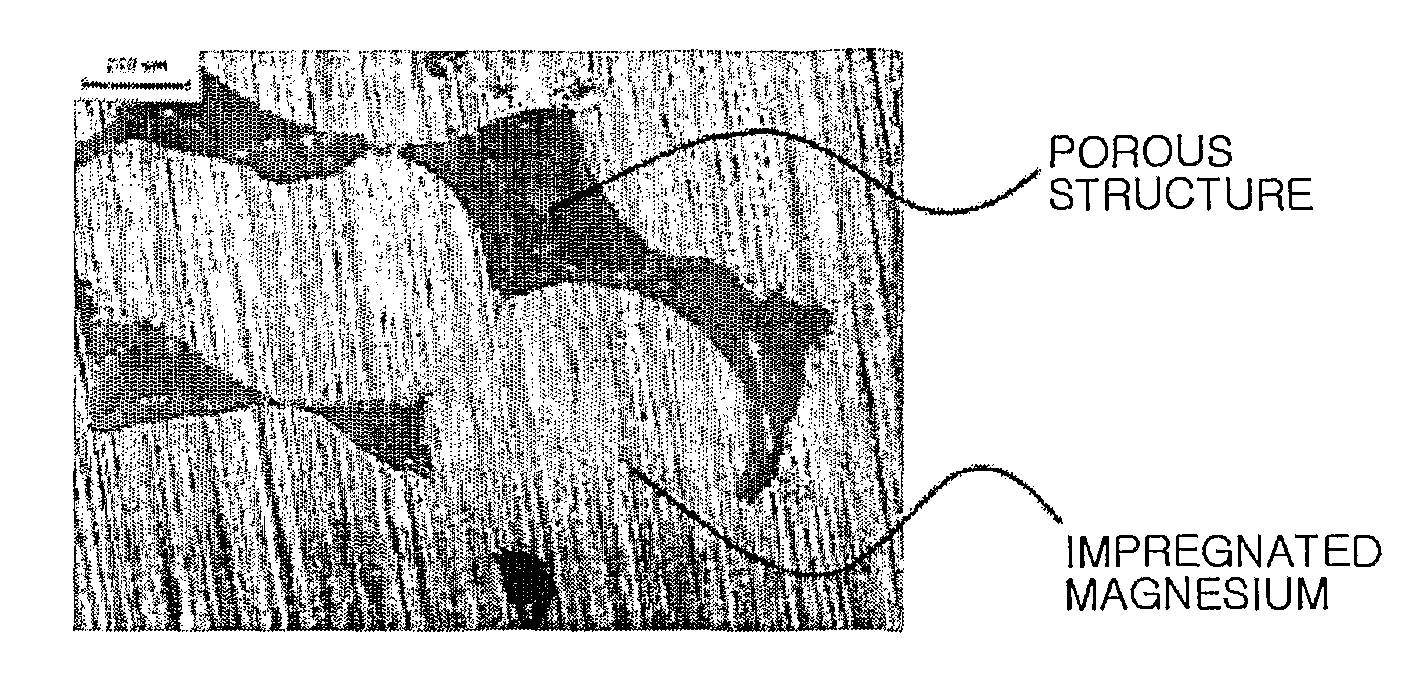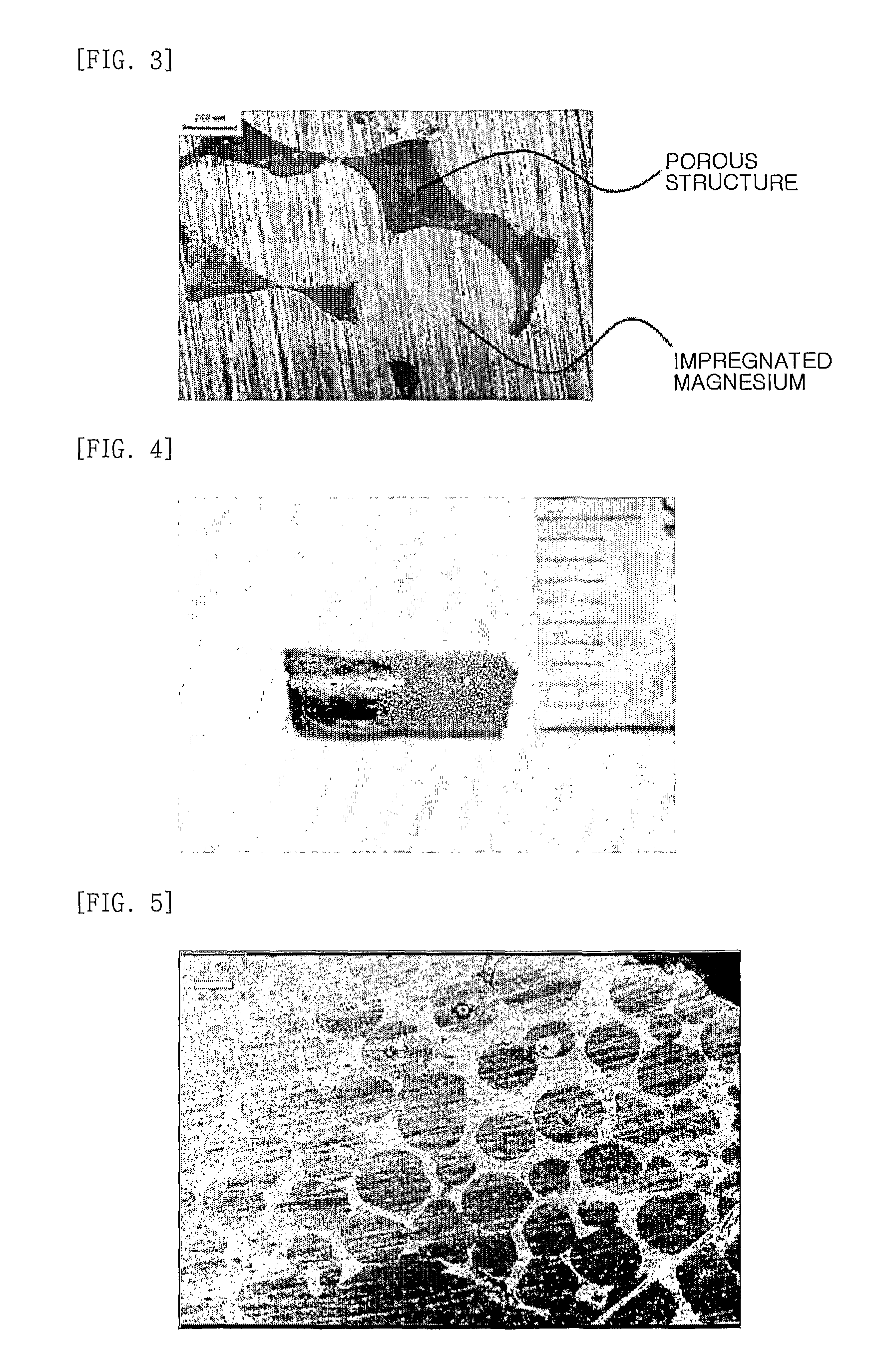Composite implant having porous structure filled with biodegradable alloy and method of magnesium-based manufacturing the same
a biodegradable alloy and composite implant technology, applied in dental surgery, prosthesis, impression caps, etc., can solve the problems of easy damage, easy to be damaged, difficult to manufacture, etc., to accelerate the formation of bone, prevent the effect of stress shielding phenomenon, and increase the bone formation ra
- Summary
- Abstract
- Description
- Claims
- Application Information
AI Technical Summary
Benefits of technology
Problems solved by technology
Method used
Image
Examples
example 1
Manufacture of an Alumina Implant Filled with Magnesium
[0068]200 mL of ethanol, as a solvent, 6 g of polyvinyl butyral-co-vinyl alcohol-co-vinyl acetate (PVB), as a binder, 6 mL of triethyl phosphate (99.8%), as a dispersant, and 50 g of alumina, as a biodegradable ceramic, were mixed and then stirred for 2 hours to form a mixed solution. Subsequently, zirconia balls were put into the mixed solution and ball-milling was performed for about 24 hours. Then, polyurethane cut in a predetermined size and shape was immersed into the mixed solution, taken out, and then rotated at room temperature to prevent the pores from clogging by the solution. Subsequently, the polyurethane was dried in the air for about 5 minutes to cause the polyurethane foam material to be covered with highly-concentrated alumina. As described above, the process of immersing the polyurethane into the mixed solution and then drying the polyurethane was repeatedly conducted, thus forming an alumina mixed film having a...
example 2
Manufacture of a Titanium Implant Filled with Magnesium
[0071]The titanium porous structure was prepared by a rotating electrode method in which spherical titanium (Ti) powder having a diameter of 100˜200 μm was interposed between conductive electrodes and then an voltage which is charged in a 450 μF capacitor on condition of 1.0 kJ or 1.5 kJ is instantaneously discharged using a high-vacuum switch while current and voltage passing through the powder during the electric discharge are controlled, thus executing rapid sintering of the spherical titanium (Ti) powder.
[0072]A copper electrode bar was provided under a quartz tube having an inner diameter of 4.0 mm, and 0.7 g of sorted titanium powder was introduced into the quartz tube, and then the titanium powders were sufficiently packed each other using a vibrator. Meanwhile, 10 kg of a load was applied to the upper copper electrode bar using an automatic loading apparatus to connect the copper electrode to the upper part of titanium p...
PUM
 Login to View More
Login to View More Abstract
Description
Claims
Application Information
 Login to View More
Login to View More - R&D
- Intellectual Property
- Life Sciences
- Materials
- Tech Scout
- Unparalleled Data Quality
- Higher Quality Content
- 60% Fewer Hallucinations
Browse by: Latest US Patents, China's latest patents, Technical Efficacy Thesaurus, Application Domain, Technology Topic, Popular Technical Reports.
© 2025 PatSnap. All rights reserved.Legal|Privacy policy|Modern Slavery Act Transparency Statement|Sitemap|About US| Contact US: help@patsnap.com



